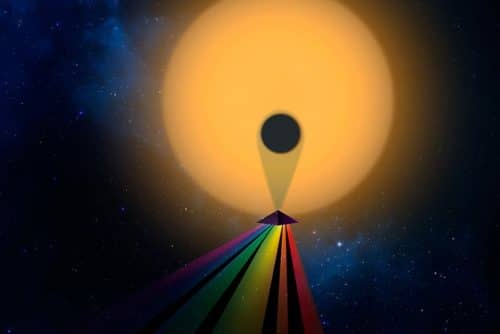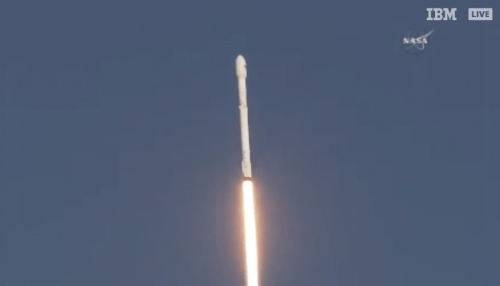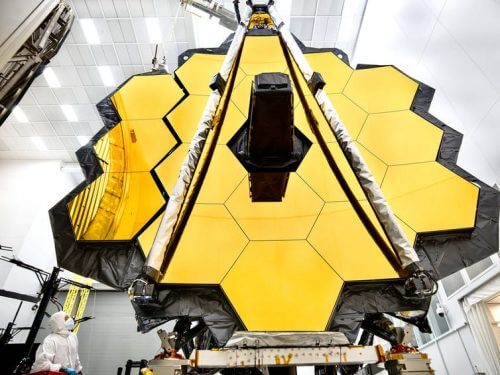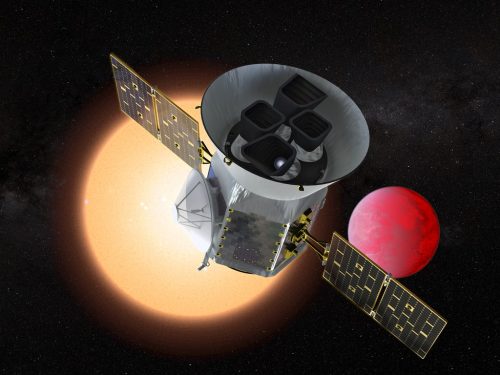In addition, SpaceX once again managed to land the first stage of the launcher on a rig in the middle of the sea. After settling into its intended orbit, the telescope will look for planets passing in front of their stars. It will then use this technique to identify planets relatively close to Earth that can be studied by future telescopes such as the James Webb Space Telescope

Launch window of 30 seconds at 01:51 Israel time (19/4/18). In this window, SpaceX's Falcon 9 launcher, launched from Cape Canaveral, managed to put the TESS space telescope into initial orbit. Meanwhile, the company again attempted to land the first stage of the launcher on a rig in the heart of the Atlantic Ocean. The telescope will then maneuver its orbit into an elongated orbit so that it orbits the Earth exactly twice in each lunar cycle. The launch today took place after a delay of two days due to malfunctions in the launcher.
After settling into its intended orbit, in about two months, the telescope will look for planets passing in front of their stars. He will then use this technique to identify planets relatively close to Earth that can be studied by future telescopes such as the James Webb Space Telescope.
TESS will continue the work of the Kepler space telescope which has so far discovered 2,650 exoplanets, over 70% of all known planets.

In an article on THE CONVERSATION website writes Koel Helier, professor of astrophysics at the University of Keele in the UK about the importance of the TESS space telescope.
"Previous generations looked at the stars in the night sky and wondered if they too were surrounded by planets. Our generation is the first to discover the answer. We now know that almost all stars have planets around them, and as our technology improves, we continue to find more. NASA's new satellite TESS (the Transiting Exoplanet Survey Satellite), is designed to increase the pursuit of small rocky planets orbiting bright stars close to the Solar System."
"We want to know how big these planets are, what orbits they have and how they formed and evolved. Do they have atmospheres, are their skies clear or cloudy, what are they made of? Over the next few decades, we may discover Earth-like planets at the right distance from their star so that water can remain in a liquid state. It is possible that at least one of them will have an atmosphere containing free oxygen molecules, a fact indicative of biological activity. TESS is a big step towards this long-term goal.”
"The planets are so faint and tiny compared to their host stars that it's amazing we can detect them at all, let alone their atmospheres. However, planets can, from our perspective, appear to be passing their star, when they block a small portion of the star's light. Tess will monitor about 200 bright stars in the vicinity of the solar system and look for these small decreases in the intensity of their light to reveal a planet passing in front of them."

"In order to study the atmosphere of these planets from the solar system, we must check their effect on the light spectrum of the star. When a planet transits a star, the thin patch of its atmosphere is backlit (from our perspective) by the star's light. Some of the wavelengths of starlight are absorbed by molecules in the atmosphere while other wavelengths will penetrate directly through it. Observing the wavelengths that reach us can reveal the composition of the atmospheres of those planets."
"Such observations are exactly at the limit of the current technological capabilities. The James Webb Space Telescope (JWST), the successor to the Hubble scheduled for launch (after many delays) in 2020 will contain a 6.5 meter diameter mirror that will be able to collect much more light than the Hubble. In addition, dedicated instruments will be installed on James Webb to study the atmospheres of planets outside the solar system." Prof. Hayler explains.
According to Prof. Hayler, “In order to use JWST most effectively, we first need to know which stars host the best planets to study and that's why we need TESS. TESS's predecessor, the Kepler Space Telescope surveyed 150,000 swaths of the sky near the constellation Cygnus, and found over a thousand planets ranging from gas giants like Jupiter to small rocky planets like Mercury, but Kepler covered only a small patch of the sky containing only a few bright enough stars So we can explore their planets.”
"In contrast, ground-based telescopes looked at bright stars across the sky to spot planets. The most successful was the Wide Angle Search for Planets (WASP) project of which I am a member. Using an array of cameras, WASP has spent the past decade monitoring a million stars each night in search of transiting planets and has discovered nearly 200. Several of these have been selected as targets for the James Webb Space Telescope.
But surveys from the ground have one major limitation - they observe the sky through the Earth's atmosphere, which limits the quality of the data. They can detect a decrease in brightness of 1%, which is enough to detect gas giants like Jupiter or Saturn, but small planets, the size of the Earth, slightly obscure the star and cause a decrease of 0.01% of its light."
"But planetary transit surveys using ground-based telescopes have one major limitation: they look through the Earth's atmosphere, which severely limits the quality of the data. They can detect brightness from a dip as small as 1%, which is enough to find giant gas planets that are like our Jupiter and Saturn. But the small rocky planets. Blocking much less light our Earth would produce a dip of only 0.01% if seen projected against our Sun.”
"Tess will combine the best of these two approaches, observing bright stars in the entire sky with the advantage of observation from space. It should be enough to spot small, rocky planets that Kepler has shown to be abundant, but we need to locate those orbiting stars bright enough for us to learn about their atmospheres with the James Webb Space Telescope."
"Tess will scan every area of the sky for 30 days. This means that it will detect planets whose orbits around the local sun are short and therefore have time to complete several orbits while TESS is looking at them. Planets with short orbits are located close to their stars, meaning most of the planets it will discover will be too hot for liquid water. But planets orbiting dim red dwarfs could be at the right temperature for life even if they are close. The red dwarf TRAPPIST-1 is a thousand times dimmer than the Sun and at least seven planets orbiting it have been discovered."
"This mission is a step towards discovering rocky planets in the habitable zone of stars like our Sun. In 2026, the European Space Agency expects to launch Plato, a satellite with the potential to discover rocky planets in orbits similar to ours - which also have seasons. The race to find markers of life such as free oxygen in the atmospheres of Earth-like planets will begin."


One response
It should be noted that JWST has been given a new name: Just Wait Space Telescope.